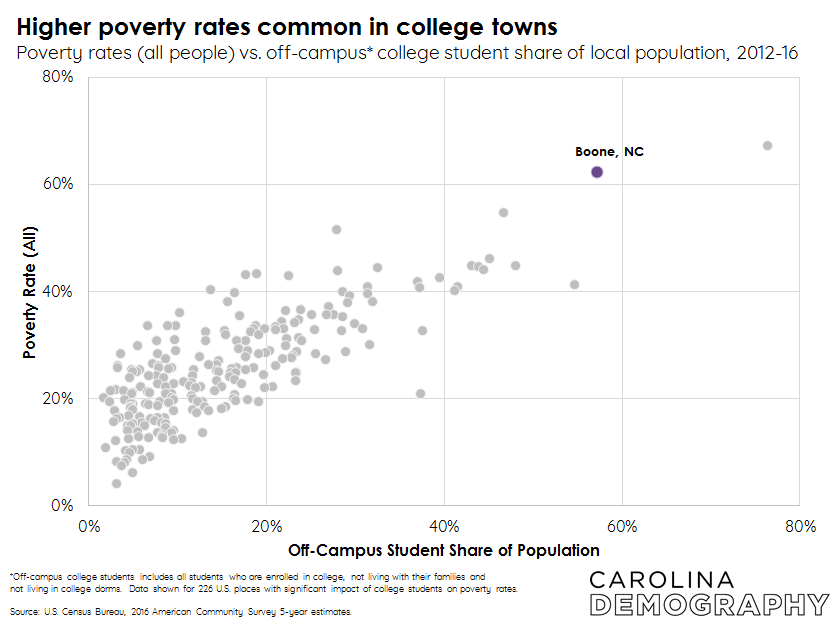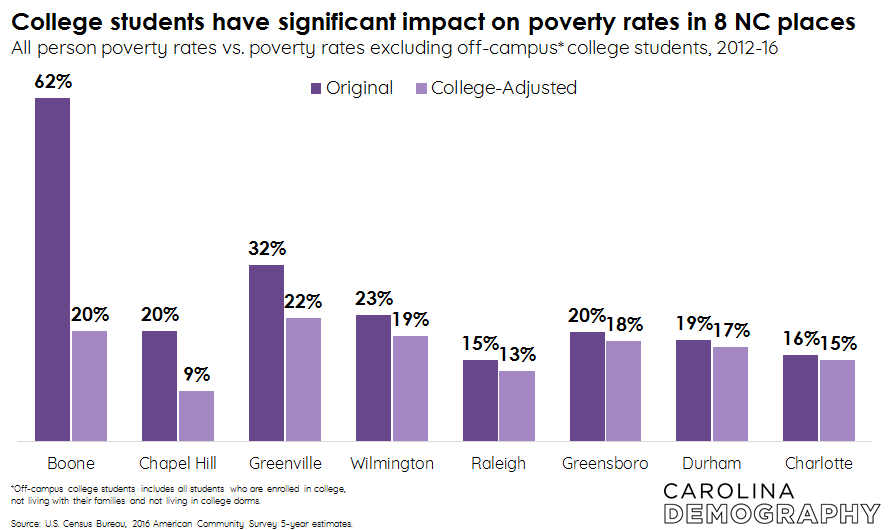College student impact on local poverty rates
Published December 8, 2017
by Rebecca Tippett, Carolina Demography Center, December 7, 2017.
Colleges and universities can have a significant impact on local demographic and economic statistics. College towns tend to see inflated poverty rates: more off-campus students (as share of population) corresponds to higher poverty rates. In Boone, North Carolina, for example, off-campus students at Appalachian State University make up 57% of the local population* and the local poverty rate is 62%.
Some of these poor individuals may be college students who are choosing not to work or working only part-time, relying instead on a combination of loans or grants, credit cards, and savings and parental assistance when it is available. Others may be college students for whom poverty is a very serious challenge. But many are not college students at all. Understanding the impact of college students on local poverty rates is vital for local leaders to fully understand and track the economic well-being of their population.
Using the recently released 2012-2016 American Community Survey five-year estimates, the U.S. Census Bureau published two tables that identify counties and communities where off-campus college students significantly impact local poverty rates. Limiting their evaluation to locations with populations of 10,000 or more, the report found:
- 211 counties and 226 places had statistically significant reductions in local poverty rates when off-campus college students were excluded.
- 8 North Carolina places and their 8 parent counties saw statistically significant reductions in local poverty rates when off-campus college students were excluded. These included Boone (Watauga), Chapel Hill (Orange), Charlotte (Mecklenburg), Durham (Durham), Greensboro (Guilford), Greenville (Pitt), Raleigh (Wake), and Wilmington (New Hanover).
- Boone, NC, had the largest reduction in poverty rates among all U.S. places evaluated. Local poverty rates dropped from 62% to 20% after excluding off-campus college students, a reduction of 42 percentage points.
- Among U.S. counties, Watauga had the 4th largest reduction in poverty, declining from 31% to 17%.
Note: Here, the local population is defined as the “poverty universe,” meaning the group of individuals for whom poverty status is determined. Poverty statistics are not calculated for individuals living in college dormitories. Individuals living in military barracks, people living in institutional group quarters, and children under age 15 who are not related to the householder are also excluded from the poverty universe. Off-campus college students includes all students who are enrolled in college and not living in dormitories or living with their families.
http://demography.cpc.unc.edu/2017/12/07/nc-in-focus-college-student-impact-on-local-poverty-rates/









